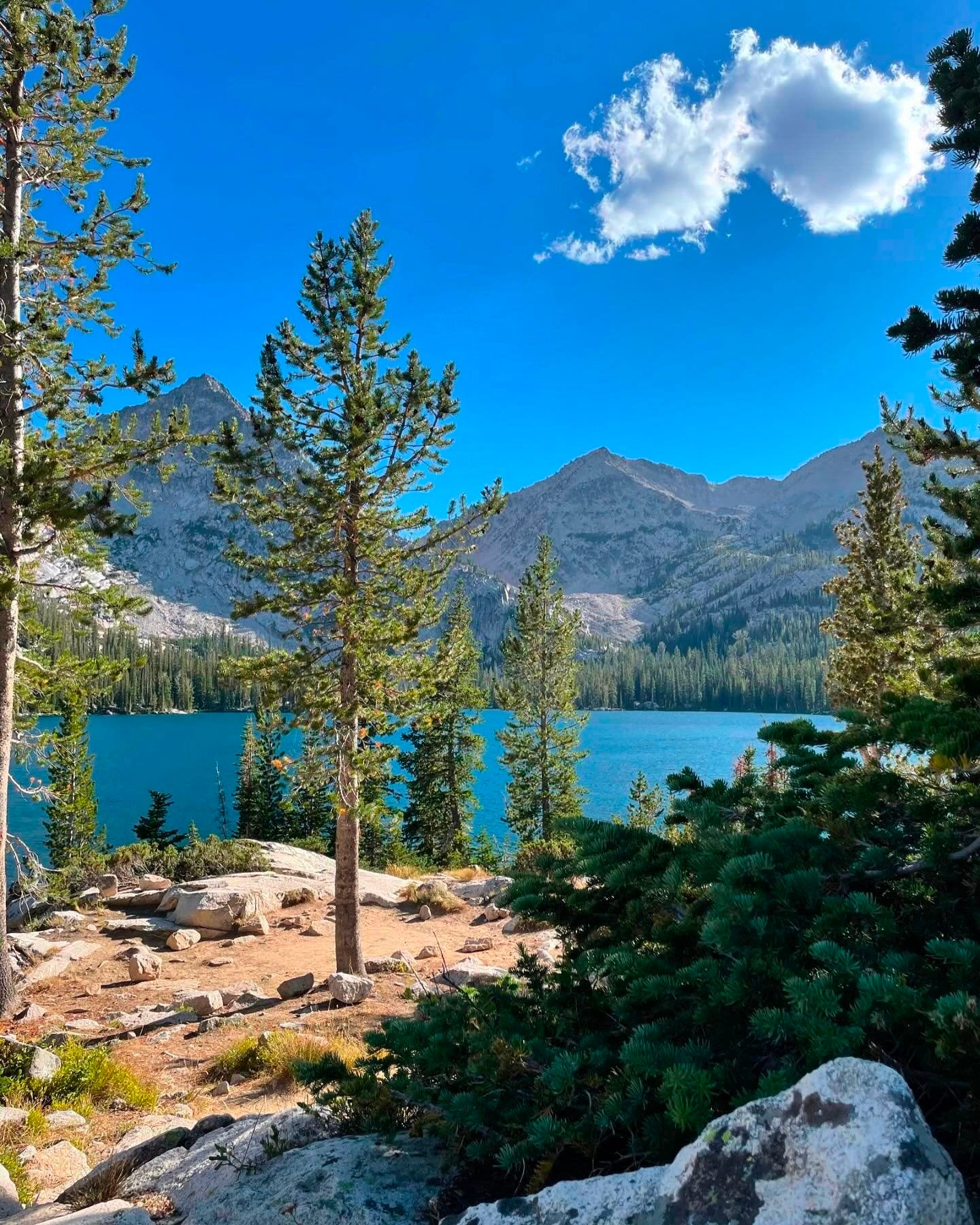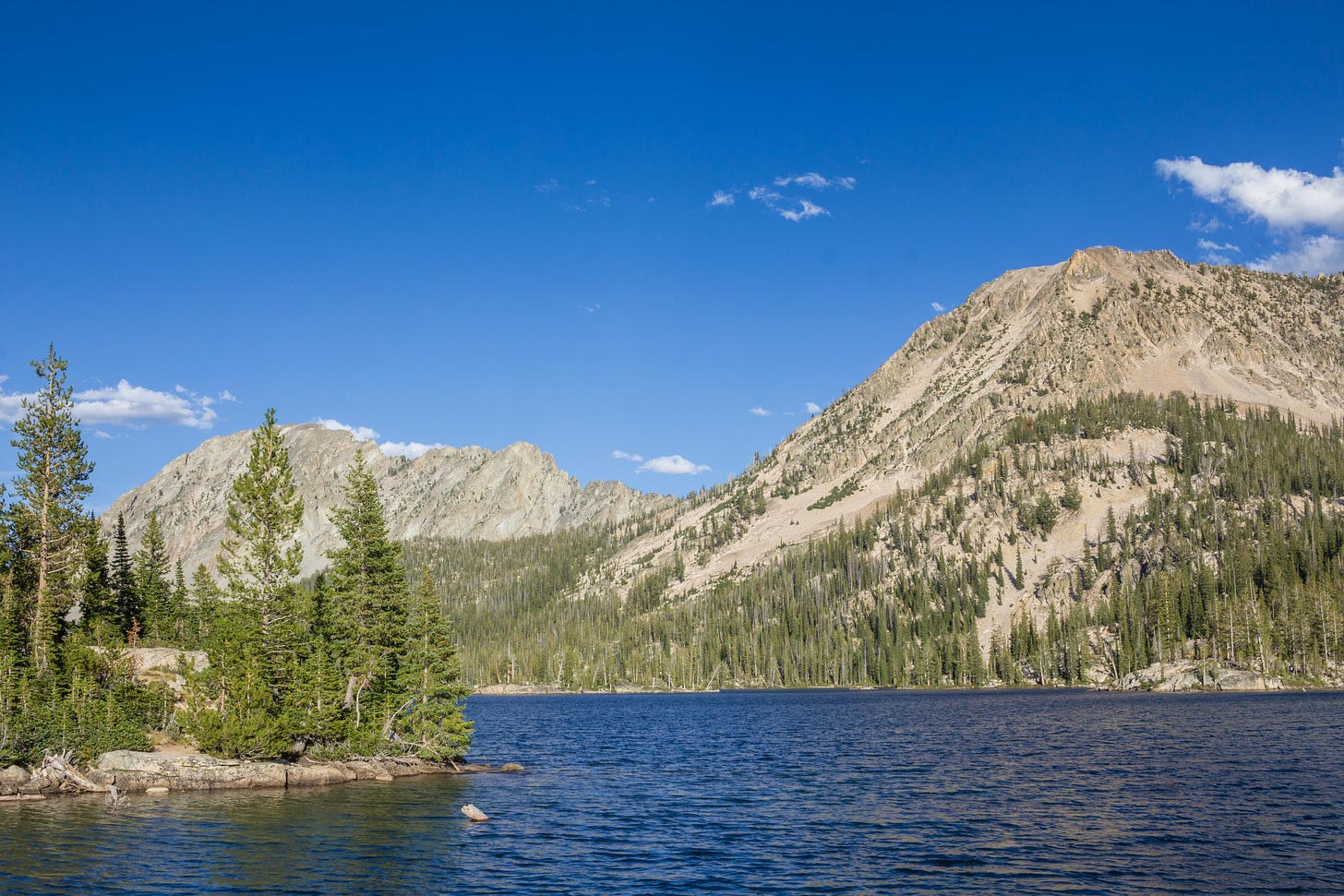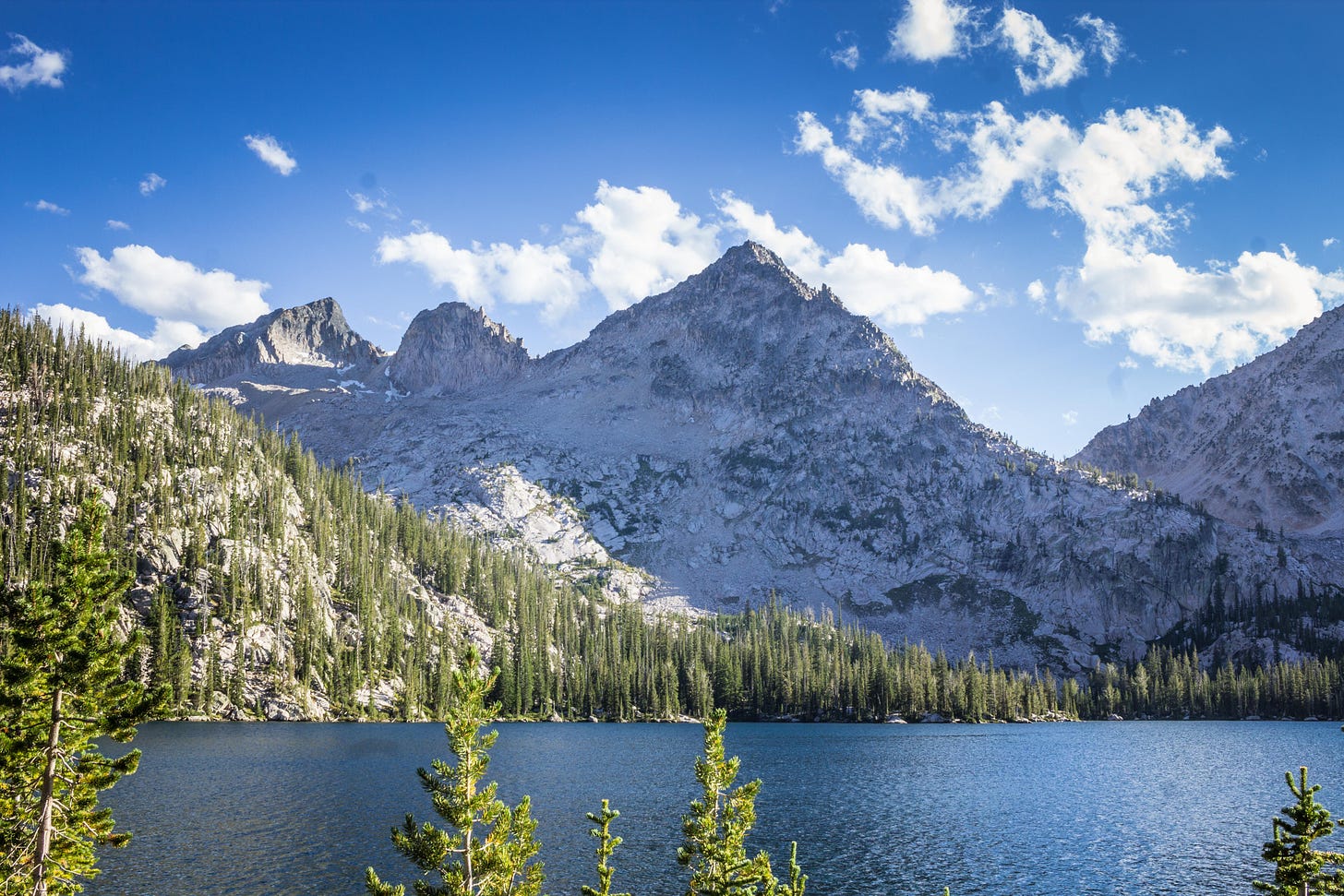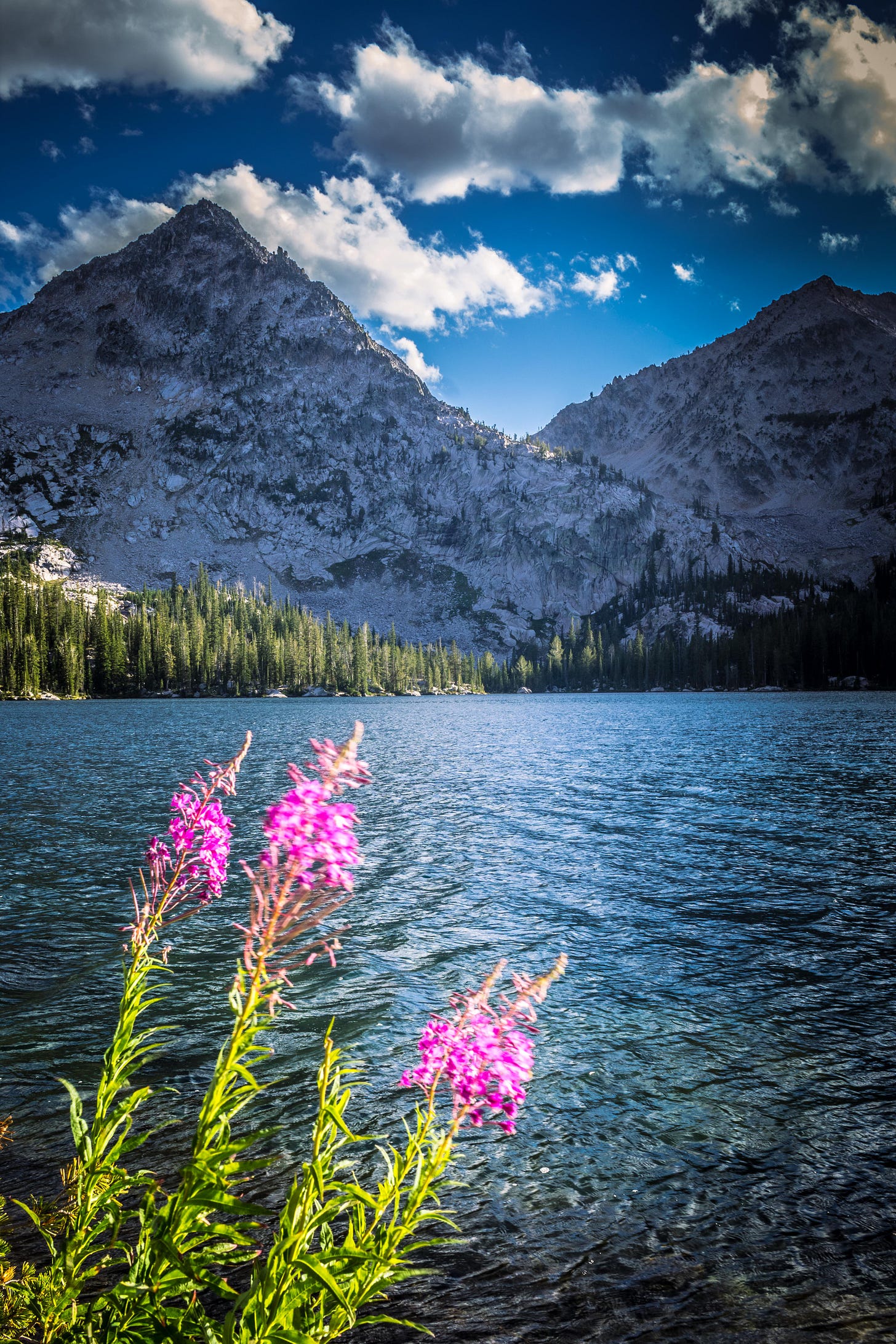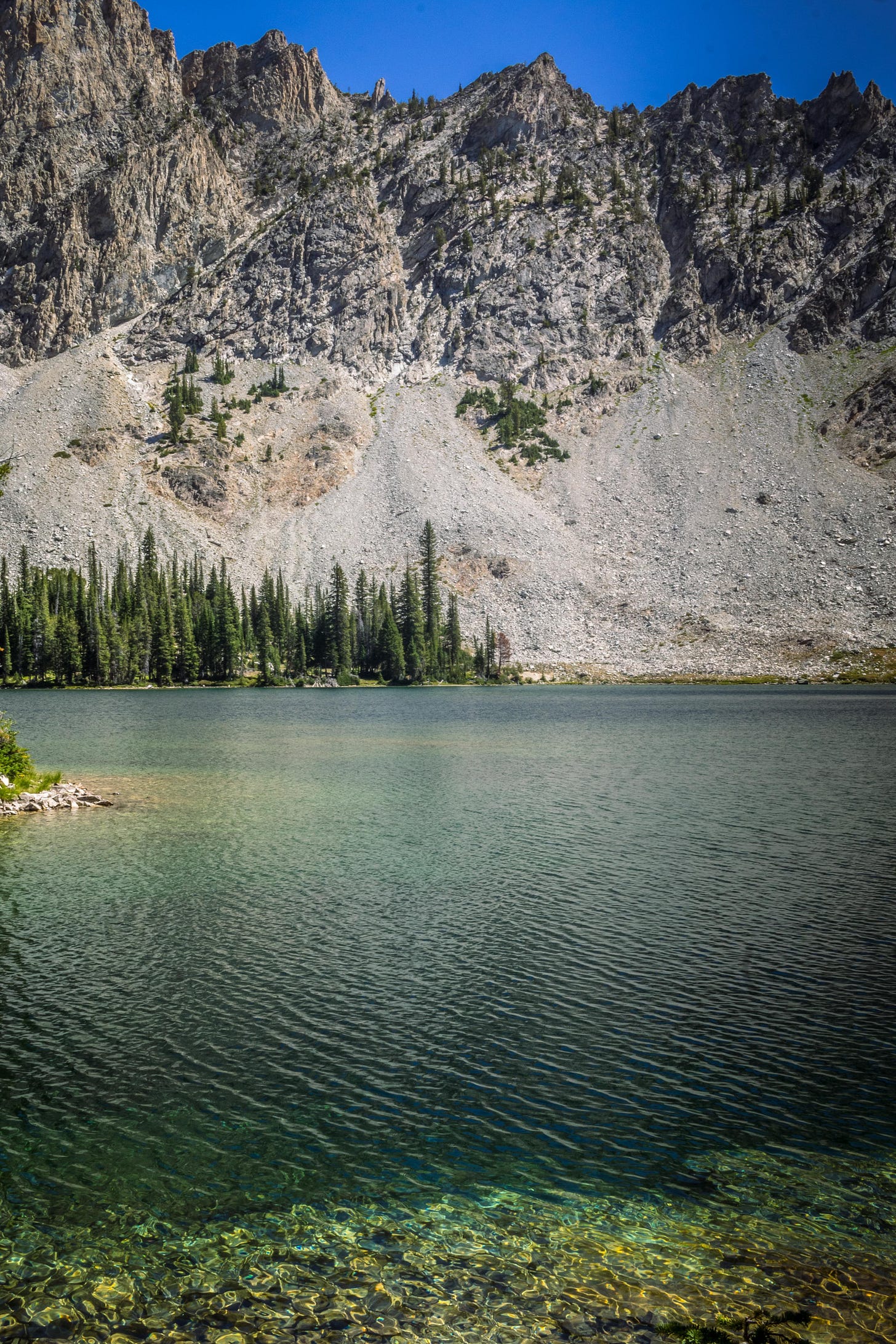Backpacking the Alice-Toxaway Loop
Hint for readers: this is not a post that will tell you how to hike the loop. Others have done that better. I put some links to those in the post.
The count is probably up to about 15.
That’s the number of blog posts I’ve started in my head since returning from backpacking the Alice-Toxaway Loop in Idaho.
Any outdoor adventure is bound to stir up some introspection that begs to be expounded upon. That’s normal…or with me it is. Yet, the right and proper way to talk about this one has eluded me. My normal resolutions that come from doing hard things don’t seem to hold up here.
But onward I type.
The basics
The Alice Toxaway loop is located in the Sawtooth Wilderness of Idaho, about 5 hours north of Salt Lake City, Utah. It’s an 18 mile loop with an embarrassment of gorgeous alpine lakes. Most of the hike takes place above 7000 feet of elevation. As backpacking loops go, it’s not the hardest, but it’s plenty challenging for most mortals like me. We went counter clockwise (making it the Toxaway-Alice loop, I suppose) on the advice of a few folks who do better trip recaps than me, linked here and here. It was both glorious and very hard, and I went home feeling both accomplished and very unsettled in my skin.
The leadup
Getting to this adventure was an adventure in and of itself. See, we’ve tried this hike before, back in 2021. Wildfire smoke put the axe to that attempt. So, for weeks leading up to this weekend, we were making plans B…and C, D, etc. I didn’t realize it until this very moment, but I was already set up for self-doubt because, as we evaluated possible other trails, I had to keep saying “that one is too much elevation for me” or “I don’t think I can do that one comfortably”. That’s not me being wimpy; that’s me acknowledging that I am not at the same fitness level as my hiking partner. But saying that to yourself on repeat…it might leave a little negative residue.
Speaking of fitness
It’s worth unpacking that whole “not at the same fitness level as my hiking partner” thing. Longtime readers will know that Shawn, who I hike with often, is always faster and more fit than me. The only time we were ever remotely near the same fitness level was when I’d been training for a half marathon and he’d literally just had COVID, and even then, note I used the words “remotely close.”
Shawn has told me he doesn’t care that I’m slower than he is.
But trust me, this is HARD to believe when it’s the beginning of the hike and you’re facing the first hill and you can feel your heart rate skyrocketing and your breath is coming short and all you can think is “OMG I have 17.75 more miles of this to go.” It’s also hard to believe when you’ve got 4 miles to go and it’s all downhill and you’re moving as fast as your tired legs will allow and you still can’t keep up with him.
There was a moment on this hike when I realized that I don’t feel like myself when backpacking. The weight of the pack changes everything about how I move. It makes my body tired in a way that running and normal hiking don’t do. I simply don’t feel like myself. That was a powerful realization and motivation to do it more and get better at it.
The views
I won’t talk much about these. I’ll just show you.
The aftermath
A couple weeks after the trip, when I was talking with my parents about the trip and sharing how hard it was, my dad asked me: “Jodi, do you ever worry that you bite off more than you can chew with some of these trips?”
In the moment, I kept my cool. I said something about how I’d researched this hike and even though it would be challenging, I knew it wasn’t beyond my capability. I pointed out that some of the alternative trips were, and that’s why I said no to them. All very rational, all very chill.
But parts of me were not chill about that question. Because it questions everything I try to believe about myself. That I am tougher than my overweight body would have the casual observer think. That I can do hard things even when medically I am called obese. More often than not I don’t look like the other girls on these trails. Sometimes I haven’t trained enough. But I have always powered through, and taken some…ok, a lot of…pride in that.
But, have I really (powered through) and should I (take pride)? Am I really just faking it for social media and the good stories afterward, convincing myself after the fact that I’m more badass than I really am?
After all, I sometimes cry when hiking hills. I didn’t get through a beginning scuba course. I got stuck on a via ferrata. I struggled backpacking in the Superstitions. And on this trip, so many times, Shawn had to wait for me to catch up. I definitely whimpered more than once when my stopping point seemed like it would never, ever come. There were uphills when I had to stop every few feet to catch my breath.
Does this all mean I was in over my head?
Despite the fact that it raised my hackles, I’m finding in this moment that I’m glad my dad asked the question. Because really thinking about it has given me the chance to own my answer, and the answer is yes. I do worry that sometimes I am in over my head. But I do my best not to let it stop me.
Because even though I cried, I made it up those hills. I didn’t like scuba diving, but I was tooling around 30 feet underwater before I decided I’d had enough. I got stuck on the via ferrata, but Shawn helped me through it, and I will go back and conquer it someday. And, even though it was hard and I struggled, I finished the 18-mile Alice-Toxaway loop in a respectable 2+ days, climbing up over a 9400 foot mountain pass en route to an 11 mile day that ended with me taking a celebratory dip in a glorious mountain lake.
These sort of adventures are not meant to be easy. Because only by strapping a pack to your back and hiking up some hills can you get to see views like we saw in the Sawtooths.
Without getting too philosophical or anthropological, there is a thing we do here in America when we define success. In some, not all, cases, success is defined by climbing a ladder. Get to the top, you win. Fall, and you fail. If you do get to the top, don’t worry about what or who you stepped over to get there. Don’t think too much about how many times you had to try to get there. The concept is binary and zero sum, but it is not reality. Most ladders that are climbed successfully have someone holding them steady. Many ladders (or mountains) that are climbed are full of tales of people who started and then had to turn back and try again. Failure is everywhere, in every scientific process, in every business process, in every personal relationship. The only reason that we move anything forward is because we try, we fail, and we try again.
I see this struggle reflected in my dad’s question. And I’m glad to be able to answer that my ability to get to see views like I did on this hike depends directly on my willingness to try hard things, to fail at them sometimes, but to always keep trying.
Ha, look at that! I guess I did find a resolution to my ongoing quest to do hard things and see amazing places. Blog therapy for the win. Thanks for reading.



